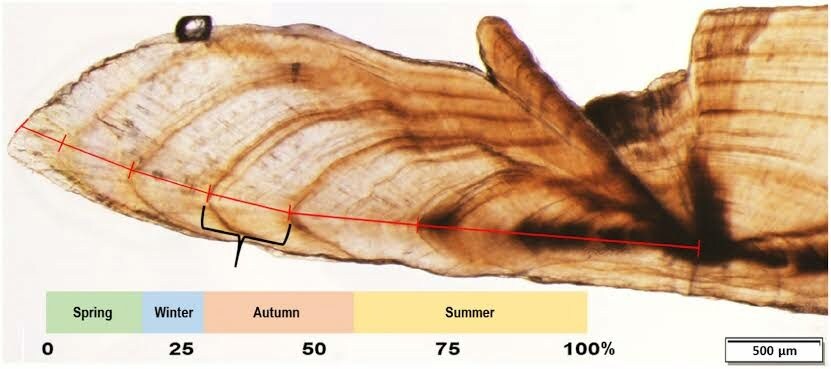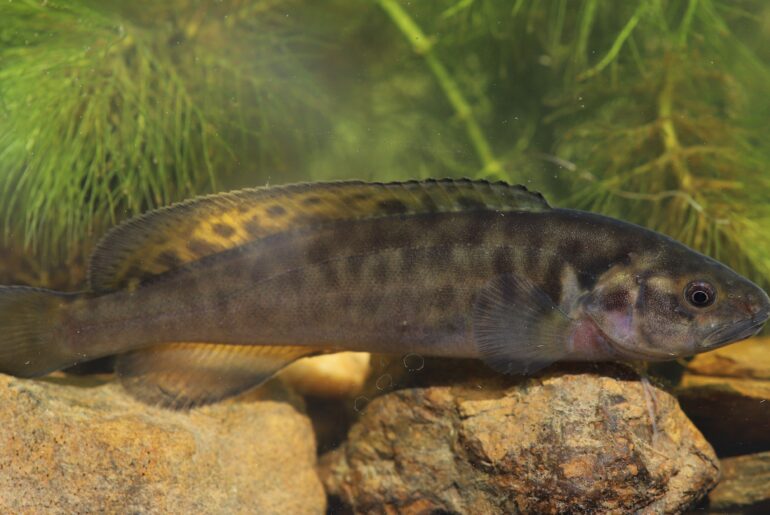How will a drying climate affect aquatic ecosystems? It’s an important, yet complex question. Part of the complexity is that SE Australia is prone to much natural variation. Stream flows, for example, show year to year variation, with even greater changes associated with droughts and floods. Long-term knowledge is needed to be able to determine the effects of such variation.
For many species of freshwater fish, the timing and magnitude (size) of flows in rivers and streams is critical for breeding and recruitment of young. Australian Bass (Macquaria novemaculeata), is a long-lived (up to 47 years!) species endemic to coastal streams of south-eastern Australia. Adults migrate downstream to spawn, the young develop in the estuary, and juveniles migrate back up the river system. In unregulated river systems, the natural flows which trigger fish movements and spawning are closely related to climatic patterns.

Dan Stoessel, together with colleagues at ARI and the University of Melbourne, used an innovative approach to investigate long-term growth and recruitment of Australian Bass in relation to changes in stream flows. They collected fish from the Genoa River, East Gippsland, and measured the size and number of annual growth increments in the otolith (the ‘ear bone’) of individuals. These growth increments provide a ‘window into the past’, allowing them to identify the year in which fish were born, and the year-to year variation in growth rates of individuals over the last 50 years or so. These observations could then be related to historic data on stream flow and water temperature.

Notably, the results showed that recruitment of young Australian Bass has not occurred regularly, but has been highly episodic. There have been just two main recruitment events, in 1985 and 1995, and few recruits since then. These events were correlated with high river flows and cooler water temperatures in spring. Similar observations from other coastal rivers in this region suggest that the recruitment of Australian Bass is driven by widespread climatic events – which determine suitably timed flow events in spring – rather than by localised catchment events.

Is this a climate change effect? It’s not possible to make direct attribution, but the apparent dependence of this species on suitable natural flows in spring, coupled with a long-term trend for lower rainfall and higher temperatures, suggest it is vulnerable to a changing climate.
References:
Stoessel, D.J., Morrongiello, J.R., Raadik, T.A., Lyon, J. and Fairbrother, P. 2018. Is climate change driving recruitment failure in Australian bass Macquaria novemaculeatain southern latitudes of the species range? Marine and Freshwater Research 69: 24-36.



